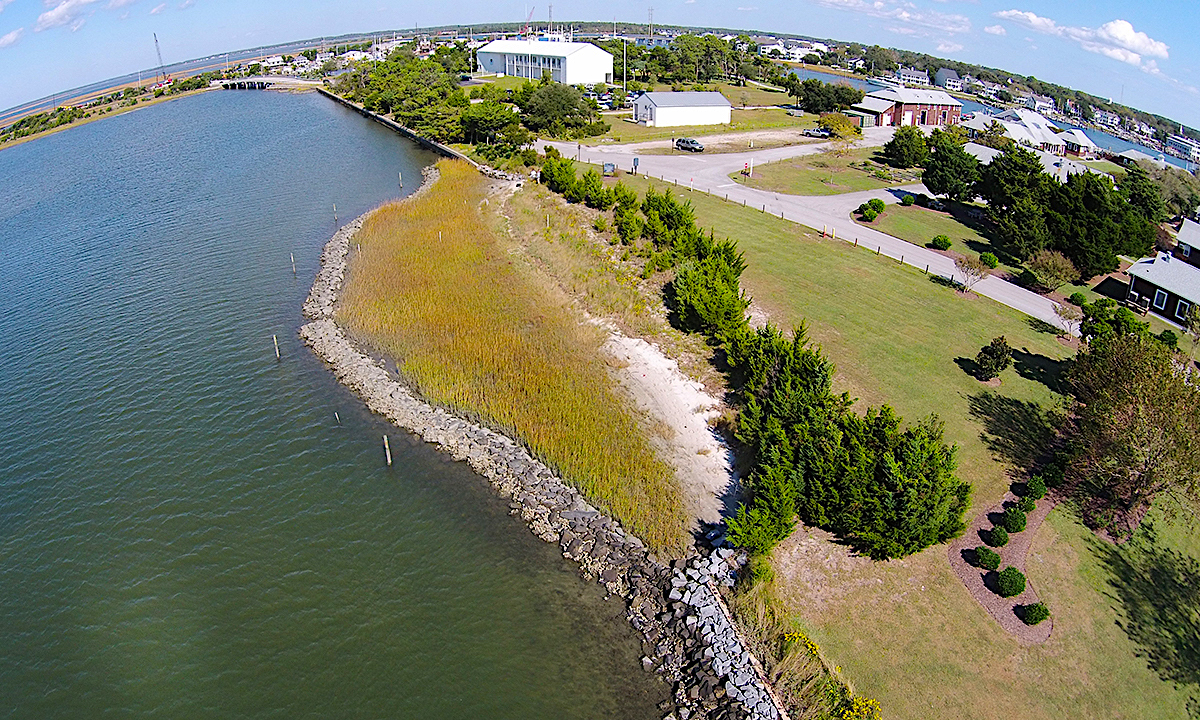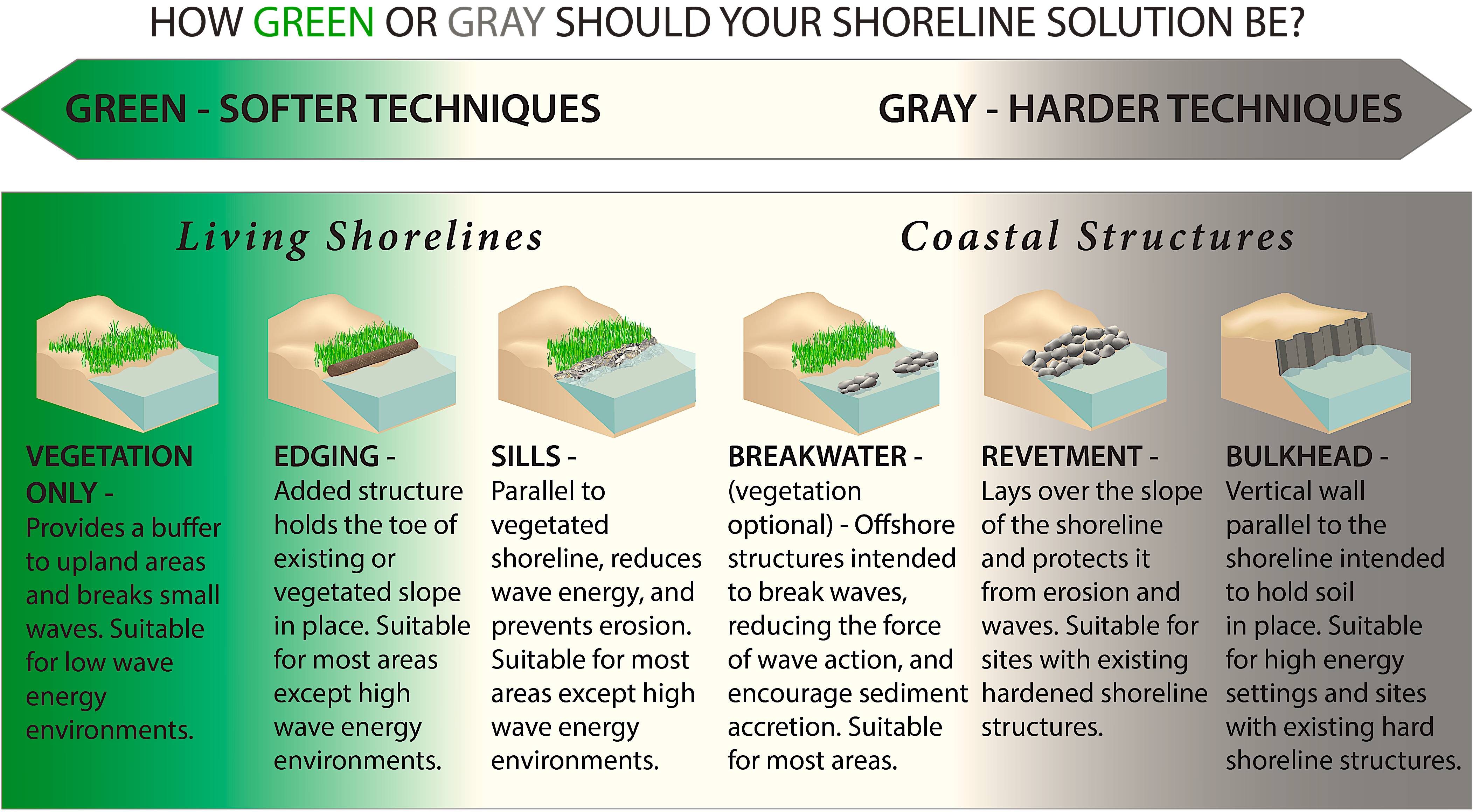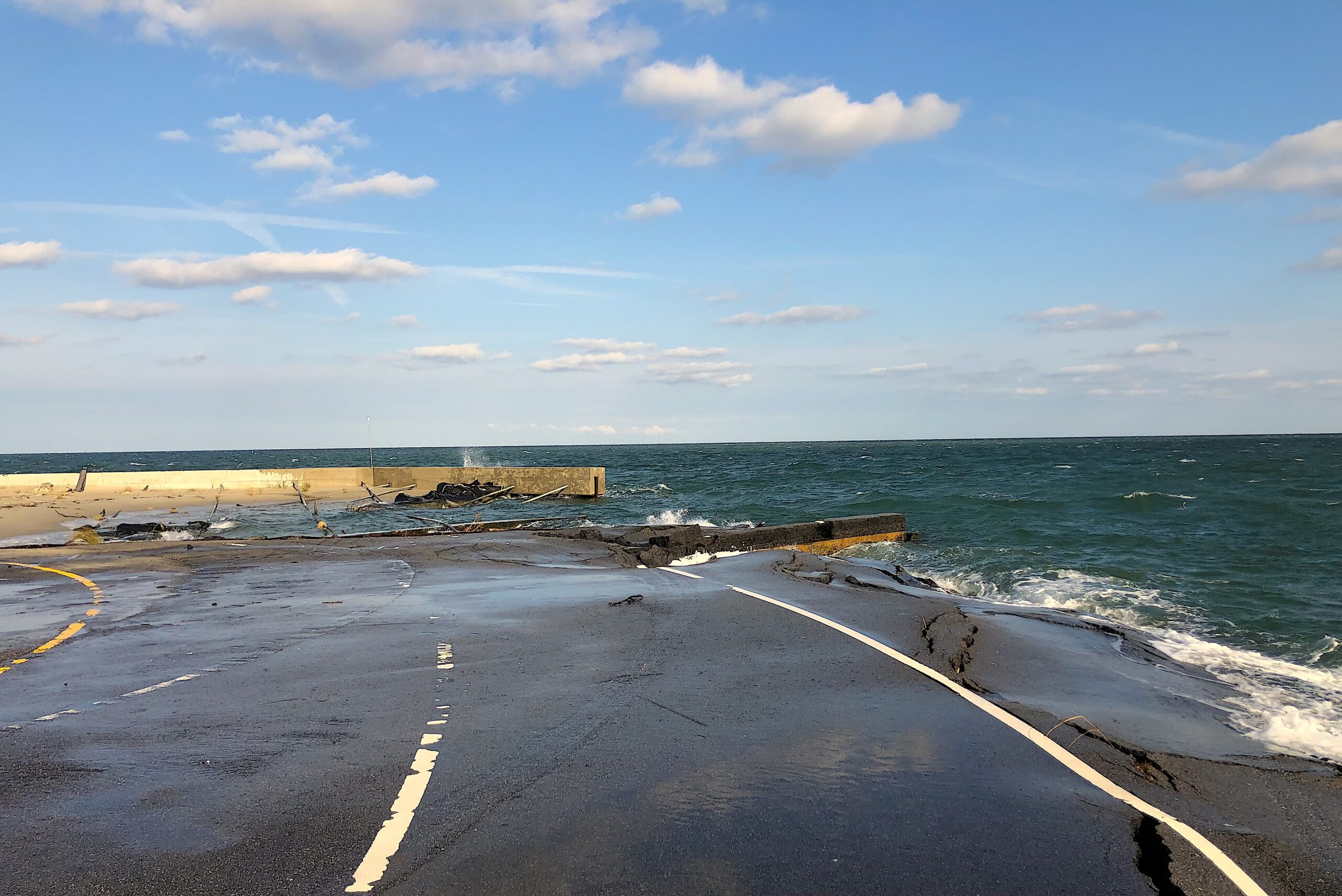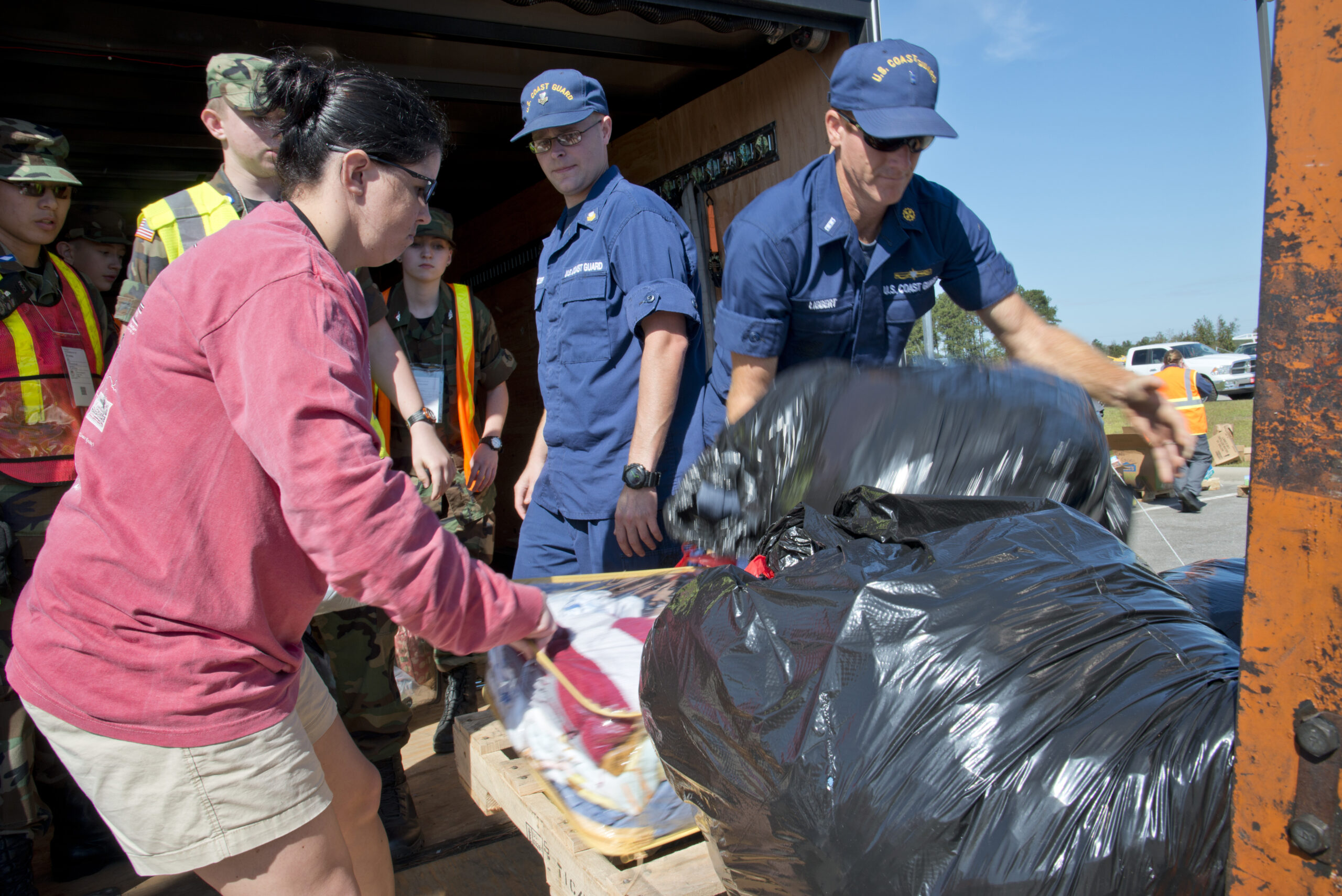The Guide to Coastal Living
Living Shorelines

Living shorelines reduce erosion, provide storm protection, support fish habitat, and more — and it’s never been easier to use them.
What is a Living Shoreline?
Living shorelines protect the coast from erosion and preserve important habitat that supports fisheries, tourism, and storm resilience. This strategy always features native plants, and it includes a wide range of designs and products. Along North Carolina’s brackish and salty waters, smooth cordgrass and other marsh grasses are common in living shorelines.
Some living shoreline designs include low-lying sills near the marsh or use breakwaters in the water. Sills and breakwaters are structures that stretch parallel with the shoreline to dampen the impacts of wave energy, while also allowing water to pass through and over them with the tides. These structures include a variety of materials: most commonly rocks, concrete, and oyster shells.
Watch “Shifting Shores: Embracing Living Shorelines in North Carolina,” a video from the Winter 2024 issue:
Why Should I Choose a Living Shoreline?
Traditionally, coastal communities have used “hard structures” — like revetments, bulkheads, and seawalls — to stop shorelines from moving. Such structures create a barrier between land and water at the intertidal zone, where valuable habitat exists.
These hard structures can also increase erosion, which results in the loss of intertidal habitat that animals like otters, birds, crabs, turtles, and fish use. Overall, hard structures can reduce community resilience and the economic value of fisheries, recreation, and tourism.
In some instances, it’s cheaper to install a living shoreline than a bulkhead. In addition, living shorelines are easier and less expensive to maintain than other shoreline options. Annual maintenance of living shorelines can cost up to $100 per linear foot, while bulkhead and revetment maintenance can be upwards of $500 per linear foot. One reason hard structure maintenance can be more expensive is because during major storm events, bulkheads are more likely to suffer structural damage than living shorelines, leading to costly repairs.
Living shorelines also increase property values.

Last, in contrast to hard structures, living shorelines can slow erosion and sometimes support the growth of shorelines and saltmarsh, providing protection from storms, supporting fish habitat, and offering other benefits that make our coastal communities more resilient. For properties experiencing erosion or wave energy, living shorelines can be especially beneficial. When everyday waves or storms stir up sand, marsh grasses can trap the sand particles as the living shoreline dampens wave energy. Living shorelines can reduce wave energy up to 60%, while salt marshes and coastal wetlands act like sponges to help absorb floodwaters.
How Can I Install a Living Shoreline?
The NC Division of Coastal Management (DCM) recommends first reflecting on a range of questions, including Do I want to protect my shoreline from boat wakes or offshore energy/waves? and Are my personal structures in imminent danger? See “How to Stabilize Your Estuarine Shoreline.”
It’s a good idea to reach out to DCM Field Representatives, who can help guide you on available options and required permitting.
After contacting your DCM field representative, it’s time to chat with a local expert who will help you envision a living shoreline at your location. There are some instances where using a living shoreline is just not feasible, and an expert can help guide you through considerations of the characteristics of the existing shoreline, site erosion, wave energy, water depth, and surrounding area conditions.
Experts in North Carolina include professionals who specialize in the installation of living shorelines, such as marine contractors and some coastal landscapers. The NC Coastal Federation provides a list of contractors with experience installing living shorelines.
After collaborating with your living shoreline expert, once you have your permit in hand, installation can begin.

Additional Resources
If you are interested in seeing a living shoreline in person, this map offers many sites that are publicly accessible on North Carolina’s coast.
The NC Division of Coastal Management has created an informative list of resources relevant to living shorelines.
Carteret Community College offers the NC Living Shorelines Academy, which provides learners with a strong foundation on the design and installation of living shorelines.
NOAA, the NC Division of Coastal Management, and NC Coastal Reserve and Natural Estuarine Research Reserve created a handbook for estuarine property owners on how to protect property from shoreline erosion.
The NC Division of Coastal Management made a brief and informative guide to the types of permits you might need to get before installing your living shoreline.
MORE
- Building Coastal Resilience Through Shoreline Management
- Living Shorelines Can Enhance Saltmarsh Resilience to Hurricanes
- Protecting homes and ecosystems with living shorelines
- Can Living Shorelines Lessen Erosion from Boat Traffic?
The Guide to Coastal Living provides North Carolinians with quick information about how to address coastal hazards and how to live in a coastal environment.
Anika Pruim, a UNC Wilmington graduate intern for North Carolina Sea Grant, and Ashley Caine, a UNC Wilmington undergraduate intern for North Carolina Sea Grant, are both completing their studies this spring. Mariko Polk, North Carolina Sea Grant’s coastal processes specialist, has a decade of experience researching living shorelines.


